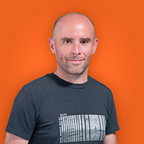The future of… do we need a new mental map?
Learning at Work Week has been a catalyst for taking the time to turn some scraps of notes into some more coherent thoughts. If you’ve missed those posts then perhaps, you’ll stumble across them another time, or they’ll be left in the ever-growing digital heap we call “the internet”.
Much of my working life has been spent at intersections. Despite a preference for structure and timetables I’ve learnt to become more comfortable with the liminal. Not the past but not yet the future. It’s the place where exploration can start to happen.
One of the questions that arises in that space is how the future of work, society and learning are connected.
At one level the connection is obvious — work is shaped by technological change which then creates shifts in society’s norms and structures. Learning takes place in response to and context of the changes — ideally to prepare people for future roles. Despite this, experience shows it often isn’t the case. Education moves too slowly and is not preparing people for the future work. Society struggles to adapt to technological change with a gulf between those who have digital connectivity and those who don’t continually growing. Post COVID we’re still facing a situation where work is somewhere you go (the office) as much as it is something you do.
It was in pondering this that I came across an article titled In Mathematics, It Often Takes a Good Map to Find Answers which makes this point:
When problems are so far off the map that mathematicians can’t even imagine how to reach them, the challenge is more than coming up with a better boat — it’s coming up with a better map.
I’m inclined to conclude that this is our current position. As an example, increasing the diversity of the workforce in digital, data and technology roles has been on the agenda at least since I left school nearly 25 years ago. It doesn’t feel like we’ve made a lot of progress. There are programmes like QA’s Cyber Explorers and Teach the Nation which are contributing, but are they just a better boat?
It is the ability to create a better map that provides us with the possibility to think of alternative solutions. As the article continues — “if you’re map shows a surprising sea route, then you may decide to build a ship.” Hindsight bias is a wonderful thing, but it is only by seeing the problem from a different perspective that we’re able to identify potential solutions — even if those solutions exist in plain sight already.
There has been much said and written about the unintended consequences of artificial intelligence being developed and deployed at scale. I’ve often said, “just because we can doesn’t mean we should”. Yet we can’t pretend the future doesn’t exist, nor imagine that change won’t happen.
We need to consider if the map that we’re working from is the right one for the future. This can’t be a map like the atlas found on the floor of the car — out of date before it is printed. There needs to be a more adaptive approach that can allow us to see the obvious in new ways, and reveal the novel as other things emerge around it.
If there was a simple way to do this we’d already be there. We must therefore accept our future challenge is going to require effort. If I had the answer, I’d not be writing this blog!
In conversation this week I used the analogy that if given eggs, flour and milk you could create pancakes, but you could also create a make — or more likely a mess. When given data about the future we have options. The way that our mental models come about have many influences. Therefore, we need the diversity of thought to be able to achieve a better outcome.
If I can’t provide you the answer the next best step is to make suggestions on how you might get there. These are my recommendations:
1) Think about your partnerships both internally and externally. Do they work like chess players sat opposite each other, playing the same goal but with conflicting outcomes? A better approach is to be on the same side of the table, drawing on each other’s experience and heading towards the same goal — play jazz together.
2) Minimise that which is static and introduce fluidity where you can. Job descriptions and competency frameworks can be useful but when they become a constraint to adaptation they need to be reconsidered.
3) Allow for learning to take place in the flow of work. This can be done by creating the opportunity to have conversations about the reasons why things have been done without judgement. There is a workforce of expert-novices — people with knowledge facing barriers to application.
I believe that if we start to do these three things there is the chance our map of the future will start to shift and we’ll be better placed not just to adapt for survival but become the pioneers of something new.
